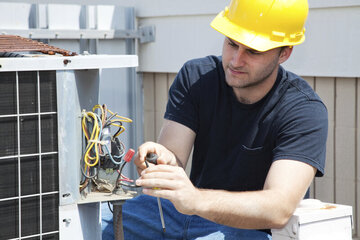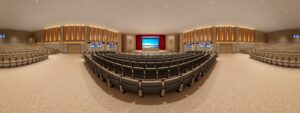
Commercial HVAC systems are critical for ensuring that buildings are comfortable, safe, and energy efficient. However, the design and installation of these systems can be complicated, requiring numerous considerations. Here, we’ll look at the top five mistakes to avoid when designing a commercial HVAC system, with insights for HVAC contractors, consultants, and anyone interested in HVAC installation services.
Inadequate Sizing of the HVAC System
One of the most common mistakes in HVAC system design is oversizing or undersizing. An oversized HVAC system turns on and off more frequently, resulting in increased wear and tear, higher operating costs, and inefficient energy consumption. In contrast, an undersized system struggles to maintain a comfortable temperature and humidity level, especially during extreme weather conditions.
To avoid this mistake, HVAC contractors and consultants must perform detailed load calculations before selecting a system. These calculations should take into account a variety of factors, including building size, layout, occupancy, window orientation, insulation quality, and local climate conditions.
Ignoring Energy Efficiency
Ignoring the energy efficiency of an HVAC system can result in significantly higher operational costs over time. HVAC design systems that do not incorporate energy-efficient methods and technologies have a negative impact on the environment as well as raising utility costs.
To mitigate this, HVAC contractors must prioritize energy-efficient units and include features like programmable thermostats, energy recovery ventilators, and high-efficiency filters. Furthermore, integrating the HVAC system design with other building management systems can improve overall energy efficiency.
Poor Distribution and Airflow
Even the most advanced HVAC system can fail to provide the expected benefits if the air distribution network is poorly designed. Inadequate airflow can cause uneven heating or cooling, leading to uncomfortable hot or cold spots throughout the building.
The key to avoiding this mistake is to ensure proper ductwork design and installation. This includes determining the appropriate duct size, sealing joints, and strategically placing vents for optimal air distribution. Regular inspections and maintenance by HVAC installation services can also aid in maintaining optimal airflow.
Neglecting Indoor Air Quality
Indoor air quality (IAQ) is a critical component of commercial HVAC system design that is frequently overlooked. Poor indoor air quality (IAQ) can cause allergies, asthma, and other respiratory conditions, affecting building occupants’ well-being and productivity.
To improve IAQ, HVAC system design should include components that regulate humidity, filter pollutants, and provide adequate ventilation. HVAC consultants and contractors should recommend systems that include air purifiers, advanced filtration, and humidity control solutions.
Inadequate Provision for Maintenance
The longevity and efficiency of an HVAC system are heavily reliant on how well it is maintained. Failure to design for maintenance can make routine checks and repairs difficult and expensive.
It is critical to design HVAC systems so that they can be easily maintained. This includes leaving enough space around equipment and using modular components that are easily replaced or upgraded. Heating, ventilation, and services for installation can also provide a maintenance schedule and training for building staff to ensure that the system runs efficiently.
Conclusion
Avoiding these common mistakes in commercial HVAC system design can result in more efficient, effective, and dependable systems. HVAC contractors, designers, and consultants must work closely together, leveraging their expertise to ensure that every aspect of the system is tailored to the building’s specific requirements. By doing so, they can improve occupant comfort, reduce operational costs, and contribute to environmental sustainability.





